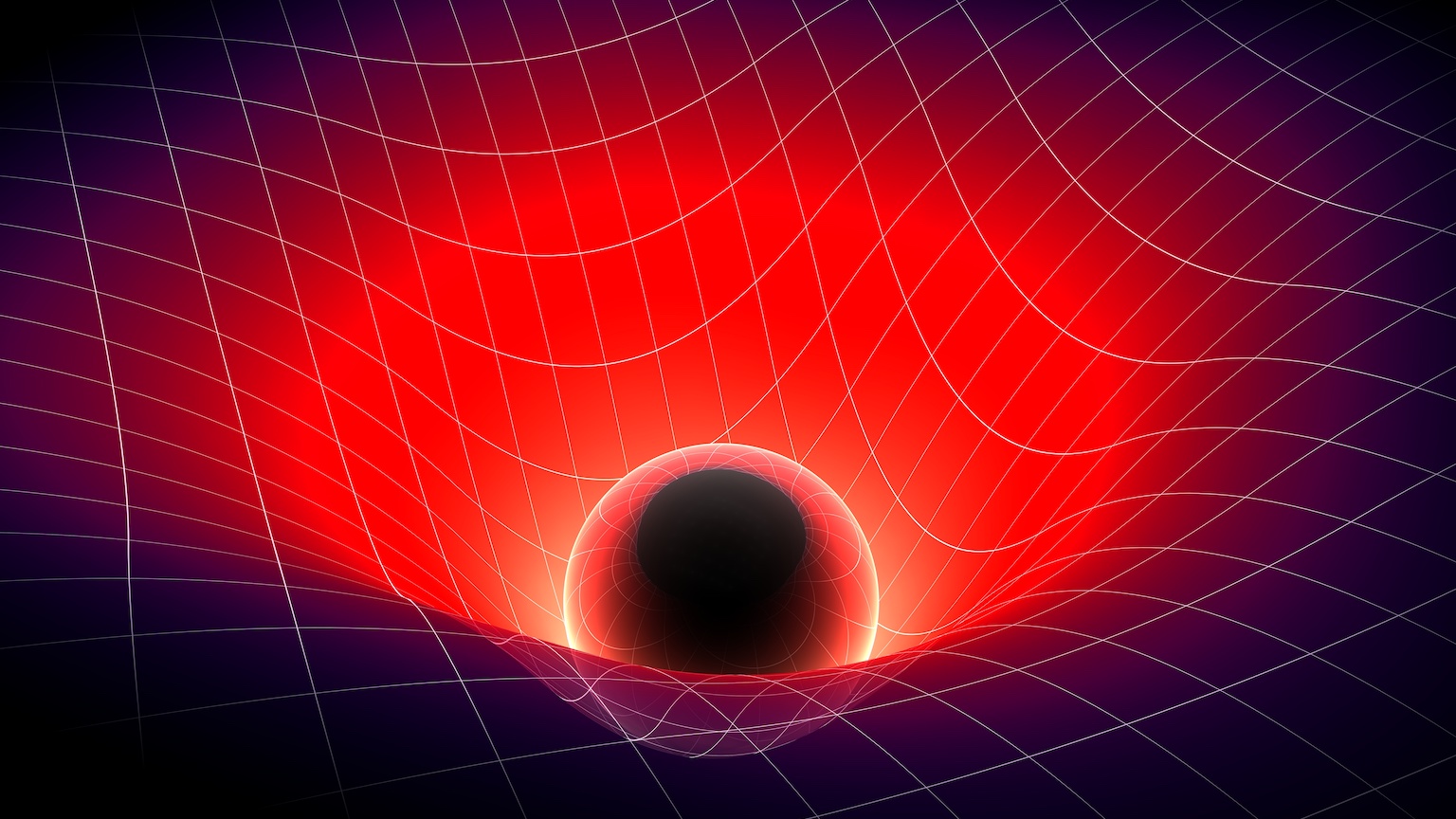How a powerful telescope found a tiny black hole

- Black holes are notoriously hard to observe as we cannot see them directly.
- The 2020 Nobel Prize in physics was for the discovery of a gigantic black hole 4.3 million times the size of the Sun at the center of our galaxy. What about smaller ones?
- Using similar techniques with new technology, astronomers just discovered a black hole of a mass comparable to that of the Sun. It is small in astronomical terms and not so far away, which opens the window to untold new discoveries ahead.
Just over two and a half years ago, headlines around the world exploded with news of the first-ever photographed black hole, a monster at the heart of the M87 galaxy, with a mass about 6.5 billion times that of our Sun. As a comparison, the black hole lurking at the heart of our own Milky Way galaxy is “only” about 4.3 million solar masses. Even more mind-boggling, the giant in M87 is really far from us, about 53.5 million light-years away. Capturing these photos took an array of eight radio telescopes working together over Earth’s surface, effectively turning our planet into a giant cosmic eye. It is truly a technological wonder.
Anything can become a black hole
In astrophysics, going big is easier because big things are easier to see. But the theory of black holes tells us that they should have all sorts of masses, from tiny submicroscopic ones to those with masses comparable to the Sun to the monster in M87. To make a black hole, a mass (a star, a person, a tennis ball) is squeezed into a sphere with a radius smaller than the so-called Schwarzschild radius. For example, the Sun would become a black hole if it was squeezed into a sphere with a radius shorter than 1.6 miles. The Earth would need be the size of a marble.
So, the idea that black holes are these monsters that live at the hearts of galaxies and gobble stars is not quite right. Stephen Hawking hypothesized that black holes “evaporate,” that is, that they (very) slowly irradiate their mass away in the form of photons. Although we are not sure if this is indeed the case, the calculation is very plausible. The main point is that the rate at which black holes evaporate is inversely proportional to the square of their mass: the smaller the mass, the faster they lose mass until they are gone.
(What remains in their place, if anything, is one of the big open questions in theoretical physics. If there really is a singularity of space at their center — a point where the laws of physics break down — what happens when they are gone?)
Still, evaporation is slow. A black hole with the mass of the Sun would outlive the Universe by 1057 years. (That’s a one followed by 57 zeroes.) This means that the Universe should be chock-full of black holes which are not so gigantic.
Black hole hunters
A new observation has made the news recently, indicative of a black hole not so far away from us with a mass comparable to that of the Sun. The exciting aspect of this new discovery is that it used a similar observational technique as the one that gave the 2020 Nobel Prize in Physics to Andrea Ghez, Reinhard Genzel, and Roger Penrose. Ghez and Genzel tracked the motions of stars near the center of the Milky Way for years, a region around the border of the constellations Sagittarius and Scorpius that houses a bright and compact astronomical radio source known as Sagittarius A* (Sgr A*). They observed anomalies in the orbits of stars surrounding Sgr A*, suggestive of the gravitational attraction of a very dense, invisible mass. After meticulous calculations, they concluded that the only viable explanation was that Sgr A* is, in fact, a giant black hole. From the shapes of the orbits, they could infer the mass at about 4.3 million times that of the Sun. Since this technique relies on tracking the orbits of stars, it is useful only for objects that are relatively close to us.
The new discovery has pushed the limits of observation. Using the Very Large Telescope (VLT) at the Atacama Desert in Chile, the European Southern Observatory (ESO) team, led by Sara Saracino from the Astrophysics Research Institute of Liverpool John Moores University in the UK, tracked the motions of stars in the small and young galaxy NGC 1850 — a cluster of thousands of stars “merely” 160,000 light-years away in the Large Magellanic Cloud (a neighbor galaxy to the Milky Way). The black hole has only about eleven solar masses. The discovery involved tracking the motions of thousands of stars and plucking out those with anomalous behavior, a feat only possible due to the Multi Unit Spectroscopic Explorer (MUSE) mounted at the VLT. The machine was designed to track the light of thousands of stars at the same time, while analyzing their properties.
Bigger things to come
Later this decade, ESO will start operating the gigantic Extremely Large Telescope also in Chile, which will be the world’s biggest optical and infrared telescope with a 35-meter main mirror. From black holes to Earth-like planets orbiting other stars to the motions of objects due to dark matter, the telescope will no doubt change the way we look at space. Together with the James Webb Space Telescope, the two instruments will make a formidable pair of eyes.
Judging from history, every time powerful new instruments become available, they tend to open unexpected doors to discovery. We just witnessed this with MUSE and the 11-solar-mass black hole nearby. If I were to place a bet, my money would go for the discovery of biosignatures, the indirect evidence of life-like activity in other worlds. As discoveries go, it would be very hard to beat that one.





